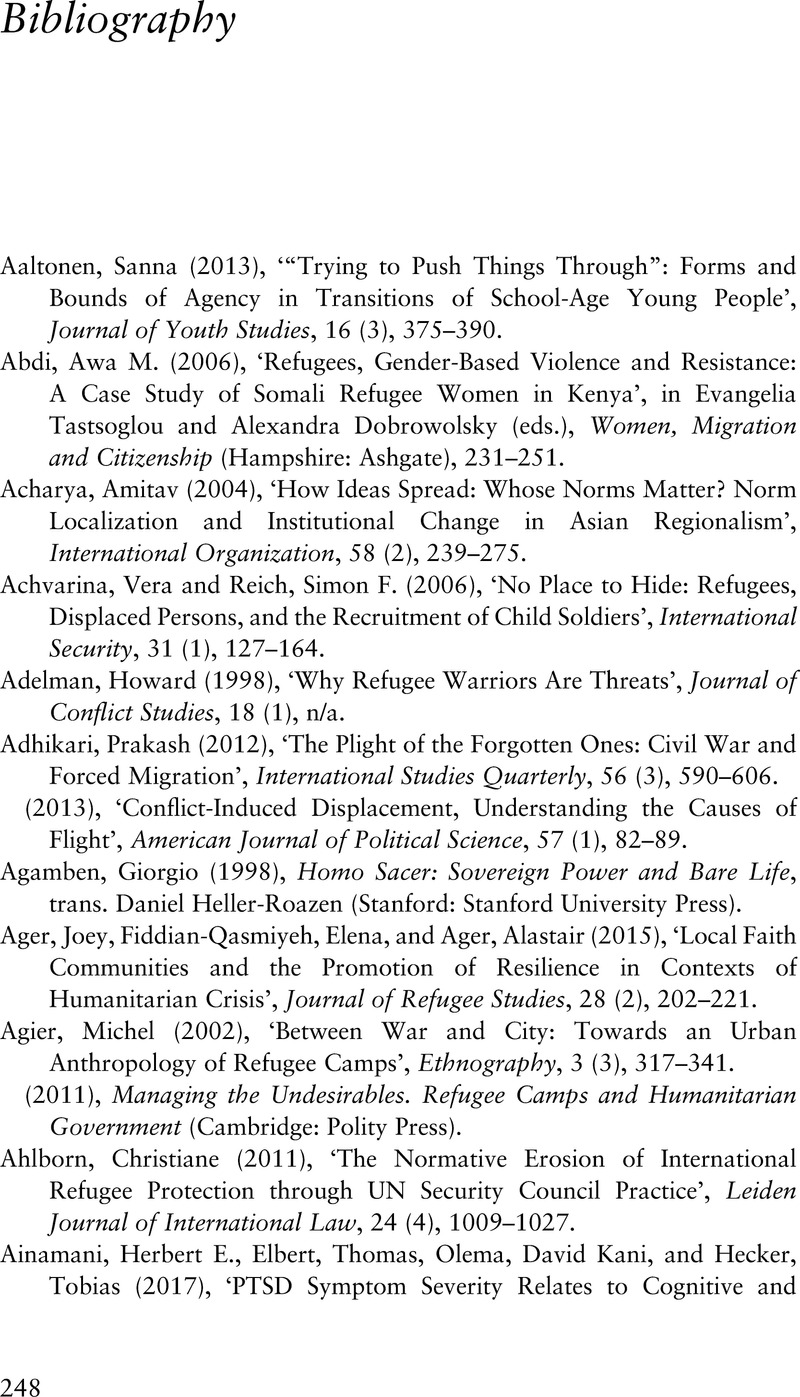Book contents
- Difficult Life in a Refugee Camp
- Difficult Life in a Refugee Camp
- Copyright page
- Contents
- Figures and Images
- Acknowledgments
- Maps
- 1 Introduction
- 2 Gender-Based Violence in the Camp and Beyond
- 3 Humanitarian Aid and the Camp Landscape
- 4 Changing Gender Relations in the Camp
- 5 Coping with the Difficult Life in the Refugee Camp
- 6 Conclusions
- Bibliography
- Index
- References
Bibliography
Published online by Cambridge University Press: 30 July 2021
- Difficult Life in a Refugee Camp
- Difficult Life in a Refugee Camp
- Copyright page
- Contents
- Figures and Images
- Acknowledgments
- Maps
- 1 Introduction
- 2 Gender-Based Violence in the Camp and Beyond
- 3 Humanitarian Aid and the Camp Landscape
- 4 Changing Gender Relations in the Camp
- 5 Coping with the Difficult Life in the Refugee Camp
- 6 Conclusions
- Bibliography
- Index
- References
Summary

- Type
- Chapter
- Information
- Difficult Life in a Refugee CampGender, Violence, and Coping in Uganda, pp. 248 - 288Publisher: Cambridge University PressPrint publication year: 2021



